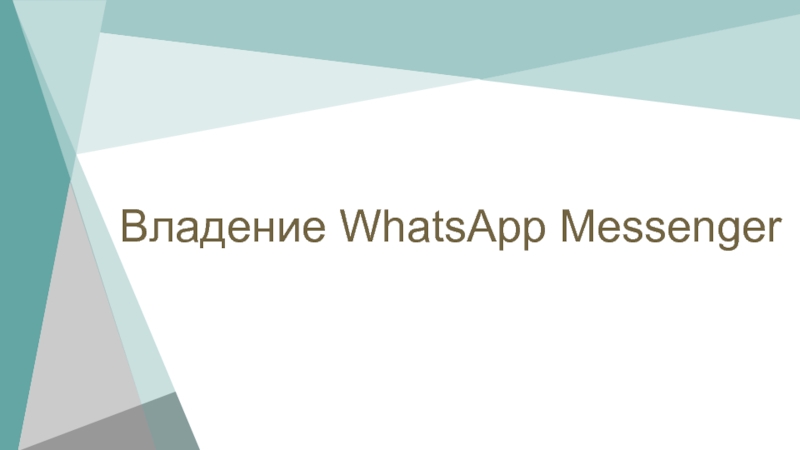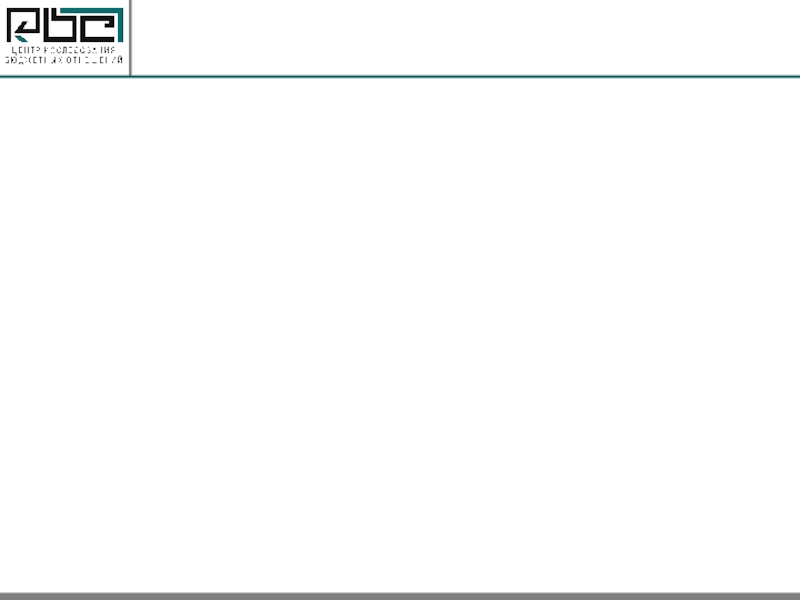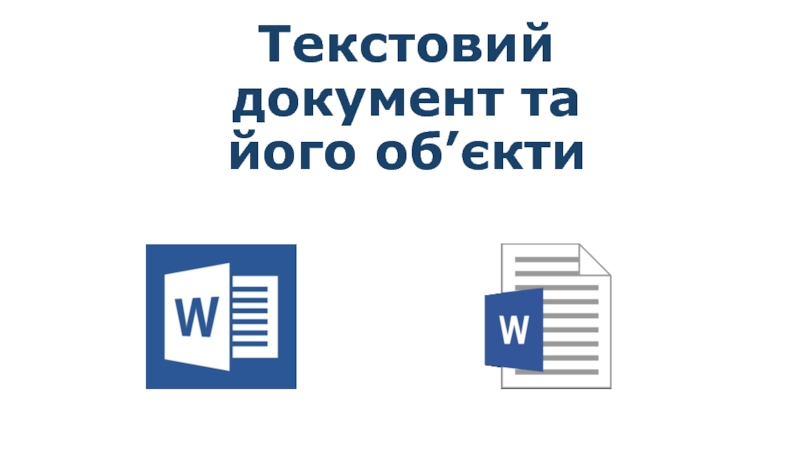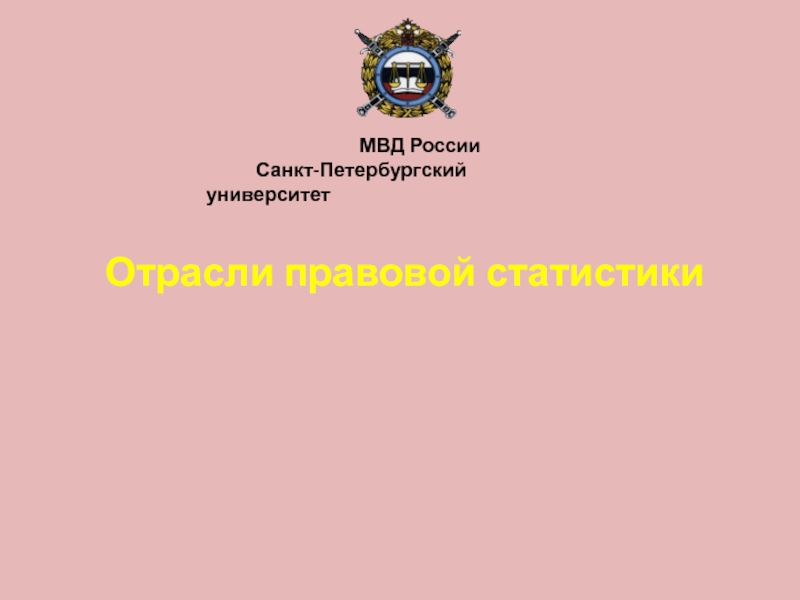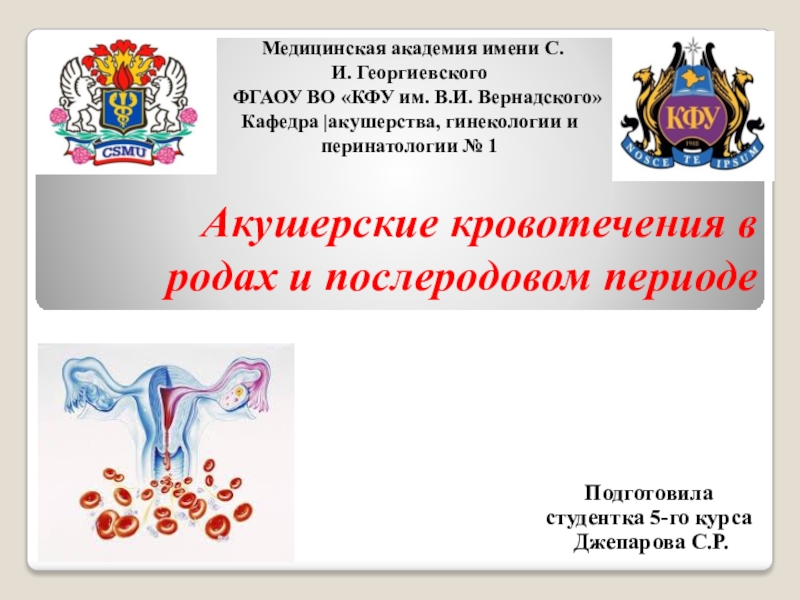Разделы презентаций
- Разное
- Английский язык
- Астрономия
- Алгебра
- Биология
- География
- Геометрия
- Детские презентации
- Информатика
- История
- Литература
- Математика
- Медицина
- Менеджмент
- Музыка
- МХК
- Немецкий язык
- ОБЖ
- Обществознание
- Окружающий мир
- Педагогика
- Русский язык
- Технология
- Физика
- Философия
- Химия
- Шаблоны, картинки для презентаций
- Экология
- Экономика
- Юриспруденция
English for business communication
Содержание
- 1. English for business communication
- 2. MemoMemo is recorded briefly used within an
- 3. Preparing to Write Your Business Memo [1]Decide
- 4. Decide if a memo needs to be
- 5. Identify your purpose for writing [1]Identify your
- 6. Narrow your topic [1]Narrow your topic. You
- 7. Consider your audience [1] Consider your audience.
- 8. Making Language and Formatting Choices [1]Avoid language
- 9. Avoid language that is too casual [1]Avoid
- 10. Слайд 10
- 11. Avoid using emotional language [1]Avoid using emotional
- 12. Слайд 12
- 13. Use signal phrases [1]Use signal phrases. When
- 14. Слайд 14
- 15. Choose an appropriate font style and sizeChoose
- 16. Слайд 16
- 17. Use standard margins for your memo [1]Use
- 18. Слайд 18
- 19. Single-space your document [1]Single-space your document. Business
- 20. Слайд 20
- 21. Composing Your Business Memo [1]Label your memo.Write
- 22. Composing Your Business Memo (cont.) [1]Decide if
- 23. Memo to Customer
- 24. 10 Second Summary [1]1. Label your memo.2.
- 25. E-mail the system for using computers to send messages over the internet
- 26. How to write a formal e-mailFormatting Your EmailWriting Your MessagePreparing to Send
- 27. Formatting Your Email Use a professional email
- 28. Stick to a professional font. Most email
- 29. Use a short and accurate subject line.
- 30. Writing Your MessageUse a proper salutation. Always
- 31. Introduce yourself in the first paragraph (if
- 32. Prioritize the most important information. Once you’ve
- 33. Get to the point. For a formal
- 34. Keep it brief. There’s no set length
- 35. Use formal language. Since formal emails are
- 36. Use a proper form of closing. As
- 37. Preparing to SendInclude any necessary attachments. If
- 38. Proofread your message for content, spelling, and
- 39. Make sure that the email does not
- 40. 10 Second SummaryUse a neutral email address,
- 41. Bibliography[1] http://www.wikihow.com/Write-a-Business-Memo
- 42. THANK YOU FOR YOUR ATTENTION!!!
- 43. Скачать презентанцию
MemoMemo is recorded briefly used within an organization or company. May be a text reminder or inform you of a small and may be sent to the person or the employees
Слайды и текст этой презентации
Слайд 3Preparing to Write Your Business Memo [1]
Decide if a memo
needs to be sent.
Identify your purpose for writing.
Narrow your topic.
Consider
your audience. Слайд 4Decide if a memo needs to be sent [1]
Decide if
a memo needs to be sent. If you need to
update several people on your team about an important business matter, then sending a memo is an excellent idea. You may even want to send one if you're communicating with just one person if, for example, you want or need to have a written record of your correspondence.However, in some cases, it may be more efficient to just talk directly to those you need to.
Also, some information may be too sensitive to send out in a memo
Слайд 5Identify your purpose for writing [1]
Identify your purpose for writing.
Depending upon your specific purpose, the content and organization of
your memo may change. Most types of memos are written for the following reasons:To propose an idea or solution. For example, if you think you know how the scheduling problems for overtime can be worked out, you may want to write up your ideas in a memo, and send it to your superior(s).
To issue an order. For example, sending a memo can be an efficient way to assign responsibilities for an upcoming conference that your department is hosting.
To provide a report. You may also want to send a memo in order to update your colleagues about an event that's recently occurred, give an update on a project, provide a progress report, or report the findings of an investigation.
Слайд 6Narrow your topic [1]
Narrow your topic. You may be juggling
a lot of projects and be tempted to send a
memo updating your colleagues, superiors, or clients on everything you're currently working on. Keep in mind though, that business memos should be focused on just one issue.They should be concise, clear, and easy to read quickly by busy individuals; thus, you don't want important information to be overlooked. Keeping the memo focused will help ensure that your message is received and understood
Слайд 7Consider your audience [1]
Consider your audience. The content, style
and tone of your business memo will all be affected
by the intended audience, so think carefully about everyone who will receive your memo.[2]For example, you'll write a different type of memo if you're writing to your colleagues about planning a surprise party for the people in the office with summer birthdays, as compared to when you're writing your supervisor about the results of your months-long investigation.
Слайд 8Making Language and Formatting Choices [1]
Avoid language that is too
casual
Avoid using emotional language
Use signal phrases
Choose an appropriate font style
and sizeUse standard margins for your memo
Single-space your document
Слайд 9Avoid language that is too casual [1]
Avoid language that is
too casual. Generally speaking, your language should be straightforward and
simple, yet professional. You should avoid taking too conversational of a tone in your memo.For example, avoid writing things like “Hey guys! TGIF, am I right? Anyway, I wanted to tell you about an important business matter.”
Instead, get right to the point: “I'm writing to provide everyone with a progress report for Project Z”.
Слайд 11Avoid using emotional language [1]
Avoid using emotional language. It's also
best to try to take a neutral tone when you
write and avoid using emotionally-charged language. Do your best to refer to facts and evidence to support your claims.For example, avoid claims like “I think we'll all be so much happier if we're allowed to dress casually on Friday.”
Instead, research to see if there are any studies on whether office morale increases when employees are allowed more autonomy in their choice of attire, and cite that in your memo.
Слайд 13Use signal phrases [1]
Use signal phrases. When you are about
to cite evidence or refer to a source, be sure
to use language which lets the reader know what you're doing.For example, try the following: “According to our findings,...” or “Research completed by the EPA has indicated that...”.
Слайд 15Choose an appropriate font style and size
Choose an appropriate font
style and size. Your memo should be easy to read,
so you should avoid using excessively small font—11 or 12 point is standard.You should also choose a simple font style such as Times New Roman. This isn't the time to play around with “fun” fonts like Comic Sans (you'll be made fun of if you choose this one!).
Слайд 17Use standard margins for your memo [1]
Use standard margins for
your memo. 1-inch margins are typical for business memos, though
some word-processing programs may include pre-formatted memo templates with slightly wider margins (for example, 1.25 inches).Слайд 19Single-space your document [1]
Single-space your document. Business memos are usually
not double-spaced. In order to keep the page number down,
consider single-spacing, but leave spaces between individual paragraphs or sections.There is usually no need for you to indent your paragraphs.
Слайд 21Composing Your Business Memo [1]
Label your memo.
Write the heading of
your memo.
Choose your recipient list carefully.
Use the appropriate names and
titles for the people on your recipient list.Research the proper titles of people you are writing to in an external memo.
Compose the subject line carefully.
Consider skipping the salutation.
Compose the first, introductory section of the memo.
Keep the introductory section brief.
Decide on the organization of the body of your memo.
Слайд 22Composing Your Business Memo (cont.) [1]
Decide if you want to
include subheadings and titles.
Write specific subheading titles.
Include topic sentences in
each of the body paragraphs of your memo.Consider using bullet points.
Keep it concise.
Decide if you need a summary paragraph.
Include a closing section or paragraph.
Sign if you wish.
Make a note about any attachments.
Review the memo carefully.
Слайд 2410 Second Summary [1]
1. Label your memo.
2. Write the heading
of your memo. Include the to, from, date, and subject.
3. Write the introduction. Keep it brief.
4.Consider adding subheadings and titles or bullets for multiple sections.
5. Include a closing section or paragraph.
6. Sign if you wish.
Слайд 27Formatting Your Email
Use a professional email address. Ideally, your email
address should be a variation of your real name, not
a username or nickname. Use periods, hyphens, or underscores to secure an e-mail address that's just your name, without extra numbers or letters, if you can.For instance, coolguy0127@theemail.com will seem unprofessional. Meredith.Athena.Calhoun@theemail.com, however, is suitable.
Слайд 28Stick to a professional font. Most email services now allow
you the option to write using a variety of fonts
and text styles. For a formal email, however, keep things conservative, with fonts like Times New Roman and Arial. Avoid decorative fonts like Comic Sans or Old English. In addition:[1]Write your email in a legible font size, such as 12 point type.
Avoid special styles like italics, highlighting, or multicolored fonts unless they are warranted by the content and purpose of the email.
Do not use all caps. These make it seem like you are shouting at the recipient
Слайд 29
Use a short and accurate subject line. Use keywords in
the subject line that suggest exactly what you are writing
about, in just a few words. This helps make sure that readers don’t overlook your email because the subject line is missing, is too vague, or suggests the email is unimportant.[2]Subjects like “Quick question,” “Contacting you,” or “Email about an important matter” are too vague or obvious to be useful.
“Schedule, Guest List, Lunch Requests, and Meeting Overview for March 12th,” on the other hand, is overwhelmingly long and covers several topics.
“Meeting RE: damaged escalator on March 12th,” however is short and to the point. It alerts your recipient to a single primary topic, and a specific date
Слайд 30Writing Your Message
Use a proper salutation. Always open a formal
email with a salutation. Addressing the recipient by name (if
known) is preferred. Include the person's title (Mr., Mrs., Ms., Dr., etc.) with their last name, followed by a comma or a colon. You can precede the salutation with "Dear..." if you like.[3]If you don't know the name of the person you're writing to, use a salutation like “Dear Sir/Madam,” “Dear Sir or Madam,” or “To whom it may concern.”
Do not use “Hello,” “Hey,” “Hi,” or other informal salutations
Слайд 31Introduce yourself in the first paragraph (if necessary). If you
are writing to someone you don't have an existing relationship
with, such as a new customer, hiring manager, or government official, tell them who you are and why you are writing. Do this in the first sentence or two of your email.For example, when writing to a potential employer, you might say: "My name is Earl Rivers. I'm contacting you to apply for the administrative assistant position listed on CareerXYZ.com."
Слайд 32
Prioritize the most important information. Once you’ve introduced yourself and
the general reason you’re writing, you can follow up with
the body of your email. Put the most important content near the top. This respects your recipient’s time, and makes the purpose of your email clear.[4]When writing to a government official, for instance, you might start by saying: "My name is Arlene Rivers. I obtained your email address from the Westchester County Clerk website. I am writing to contest the traffic citation I received on December 31, 2009. "
Слайд 33
Get to the point. For a formal email, it’s ok
to be direct, as long as you are polite. Beating
around the bush will only lose your reader and make it harder to figure out what you want or need from them.[5]For instance, when writing to a professor, don’t waste space with unnecessary padding like: “This is Darlene Frankreich. Do you know me? CHEM 221 is my favorite class right now. I love the way the lectures are so organized. I can always follow along and know what will be on the tests. Speaking of tests, I was thinking about the next exam.”
Instead, it would be much clearer to write something like: “This is Darlene Frankreich. I’m a student in your CHEM 221 class, and I'm writing about a potential exam time conflict.”
Слайд 34Keep it brief. There’s no set length for how long
an email should be. However, it’s a good idea to
keep an email to about one (laptop or desktop size) screen length.[6]If your email is relatively lengthy, break it up into short paragraphs. Insert a line break between each paragraph instead of indenting.
Слайд 35
Use formal language. Since formal emails are written for professional
contexts, you’ll want to give a good impression. Use complete
sentences and polite phrasing. Avoid things like:[7]Slang
Unnecessary contractions
Emoticons and emoji's
Jokes
Слайд 36
Use a proper form of closing. As with salutations, there
are a variety of closings that are acceptable in formal
emails. Make sure to follow up with your full name and job title or other signature (if you have one). Examples of potential closings include:[8]"Yours sincerely,"
"Yours cordially,"
"Respectfully,"
"Best,"
“Your student,”
Слайд 37Preparing to Send
Include any necessary attachments. If you need to
include any attachments, make sure to mention them in the
body of the email to let the recipient know that they are included. Be courteous by trying to keep the number of attachments and their file size down, and by using common or widely compatible file types.[9]For example, include a note like “I am attaching a copy of my resume and portfolio, in PDF format.”
Слайд 38
Proofread your message for content, spelling, and grammar. Don’t just
rely on your email service’s spelling or grammar checker. Reading
your email aloud or asking someone to proofread it is a great way to catch any typos, mistakes, or unclear phrasesСлайд 39Make sure that the email does not contain any sensitive
information. Always keep in mind that email is not a
secure communication system. Remember that email servers can be hacked, or that your recipient might intentionally or unintentionally share information that you didn’t want divulged.[11]Avoid including things like passwords, account numbers, and confidential information in an email.
Слайд 4010 Second Summary
Use a neutral email address, not a nickname
or username.
2. Keep the subject header short and accurate.
3. Write
a proper salutation, and introduce yourself, if necessary.4. Write your message. Keep it to the point.
5. Sign off appropriately, then sign with your full name.
6. Proofread the email before sending.
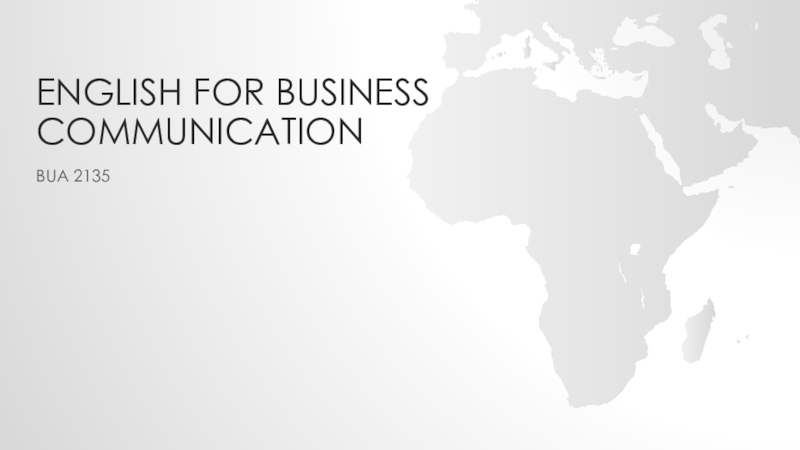
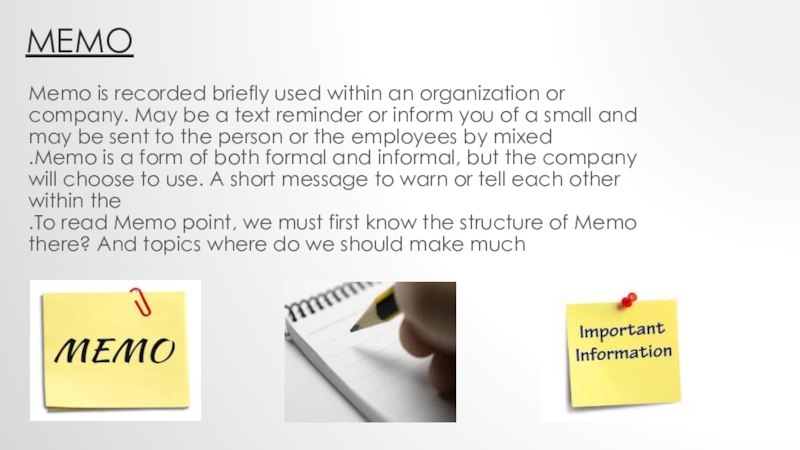
![English for business communication Preparing to Write Your Business Memo [1]Decide if a memo needs Preparing to Write Your Business Memo [1]Decide if a memo needs to be sent.Identify your purpose for](/img/tmb/7/622066/249f98b52a216e91743fa6d260d7d43f-800x.jpg)
![English for business communication Decide if a memo needs to be sent [1]Decide if a Decide if a memo needs to be sent [1]Decide if a memo needs to be sent. If](/img/tmb/7/622066/69e6e1497a3eb32f7838801a6e24bc51-800x.jpg)
![English for business communication Identify your purpose for writing [1]Identify your purpose for writing. Depending Identify your purpose for writing [1]Identify your purpose for writing. Depending upon your specific purpose, the content](/img/tmb/7/622066/0fd1d5b253d40f021bb4f85a97fd33a7-800x.jpg)
![English for business communication Narrow your topic [1]Narrow your topic. You may be juggling a Narrow your topic [1]Narrow your topic. You may be juggling a lot of projects and be tempted](/img/tmb/7/622066/15daffdc0c73dc89892b5b4ef4833bdc-800x.jpg)
![English for business communication Consider your audience [1] Consider your audience. The content, style and Consider your audience [1] Consider your audience. The content, style and tone of your business memo will](/img/tmb/7/622066/02d468cf62dccbaa9ac1c9f5cd3efc97-800x.jpg)
![English for business communication Making Language and Formatting Choices [1]Avoid language that is too casualAvoid Making Language and Formatting Choices [1]Avoid language that is too casualAvoid using emotional languageUse signal phrasesChoose an](/img/tmb/7/622066/97736cf69c4e66793e3b3cd8be2235ca-800x.jpg)
![English for business communication Avoid language that is too casual [1]Avoid language that is too Avoid language that is too casual [1]Avoid language that is too casual. Generally speaking, your language should](/img/tmb/7/622066/6d25e2595e2d4fe87ad46039355abc17-800x.jpg)
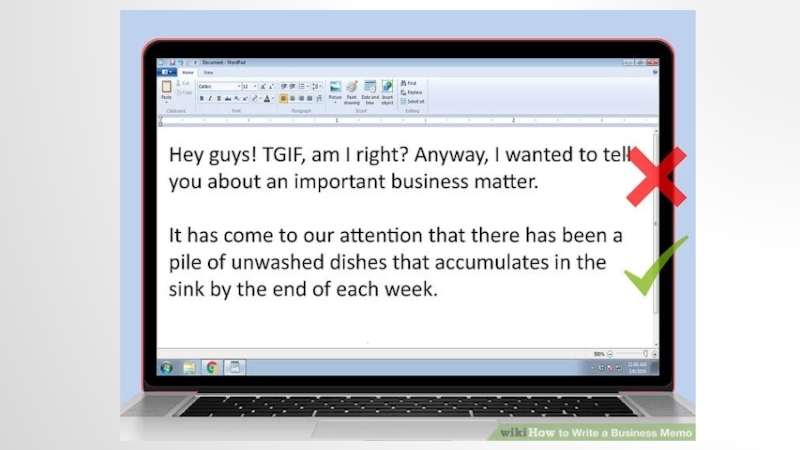
![English for business communication Avoid using emotional language [1]Avoid using emotional language. It's also best Avoid using emotional language [1]Avoid using emotional language. It's also best to try to take a neutral](/img/tmb/7/622066/6d686a33ef072a1fb5eb543fc6a007cb-800x.jpg)
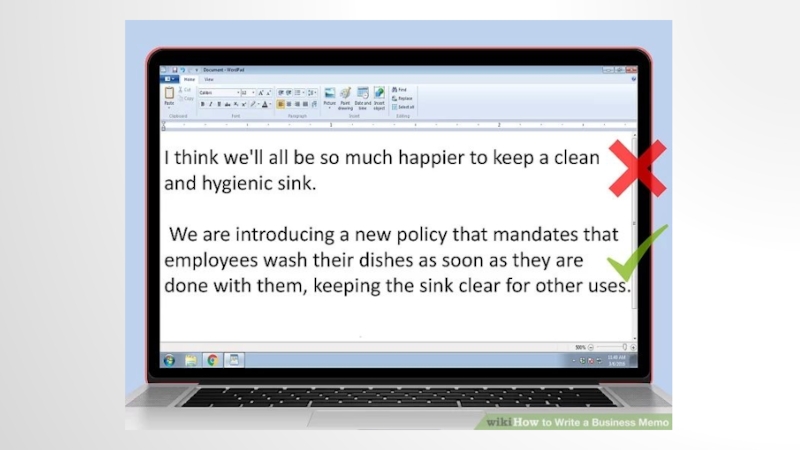
![English for business communication Use signal phrases [1]Use signal phrases. When you are about to Use signal phrases [1]Use signal phrases. When you are about to cite evidence or refer to a](/img/tmb/7/622066/66ded06d6ef56344f3a9ff910a56aeb5-800x.jpg)
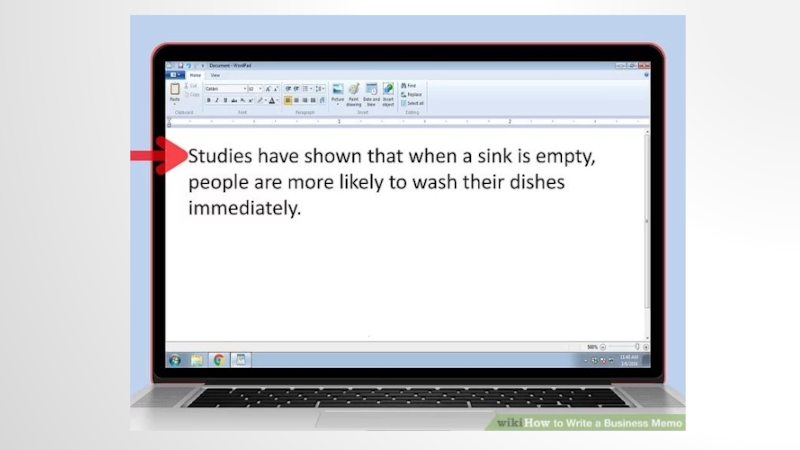
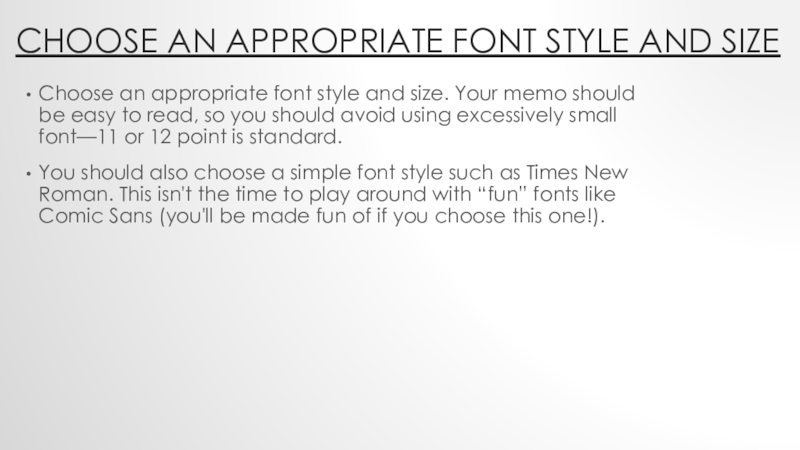
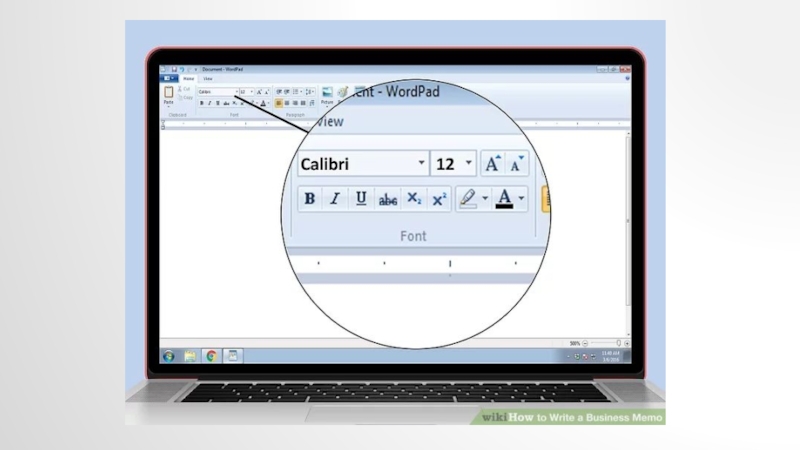
![English for business communication Use standard margins for your memo [1]Use standard margins for your Use standard margins for your memo [1]Use standard margins for your memo. 1-inch margins are typical for](/img/tmb/7/622066/edca592576aeebf199981f80c8f2da1a-800x.jpg)
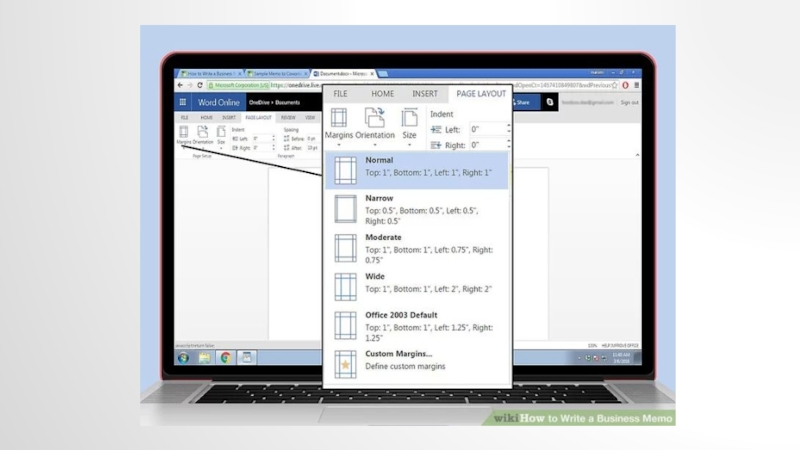
![English for business communication Single-space your document [1]Single-space your document. Business memos are usually not Single-space your document [1]Single-space your document. Business memos are usually not double-spaced. In order to keep the](/img/tmb/7/622066/5ba9b8be4fdede9f49aa9ff16a54ff45-800x.jpg)
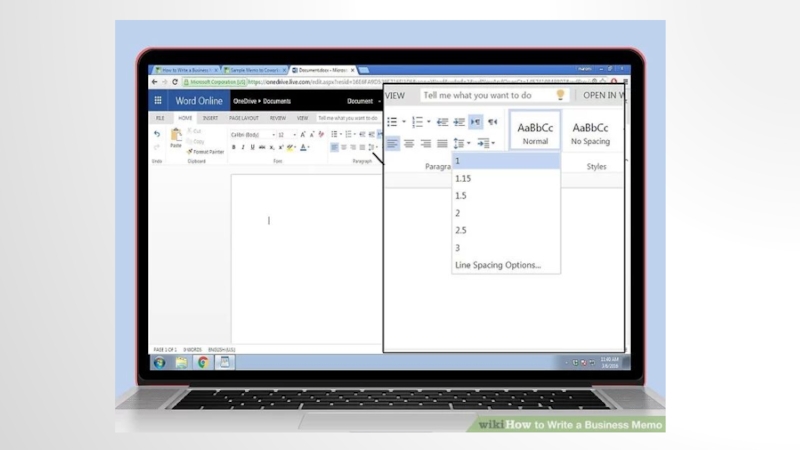
![English for business communication Composing Your Business Memo [1]Label your memo.Write the heading of your Composing Your Business Memo [1]Label your memo.Write the heading of your memo.Choose your recipient list carefully.Use the](/img/tmb/7/622066/8b8f55207e5cdd08711adff6e6f0021e-800x.jpg)
![English for business communication Composing Your Business Memo (cont.) [1]Decide if you want to include Composing Your Business Memo (cont.) [1]Decide if you want to include subheadings and titles.Write specific subheading titles.Include](/img/tmb/7/622066/b3bff78389d387c6d458d5f947b4da87-800x.jpg)
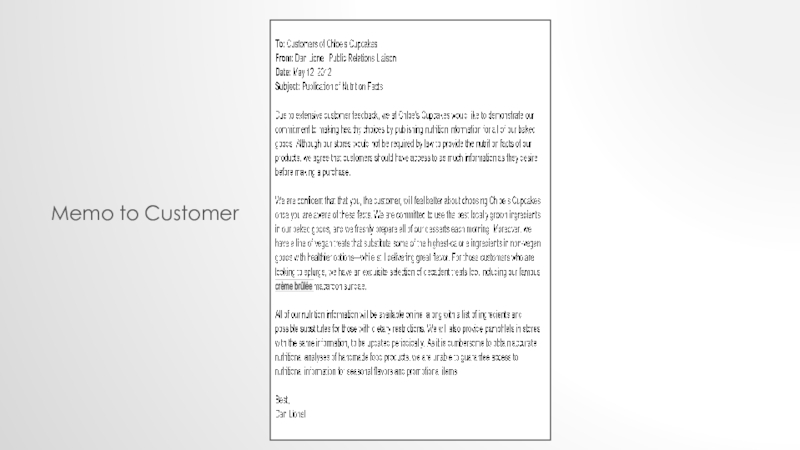
![English for business communication 10 Second Summary [1]1. Label your memo.2. Write the heading of 10 Second Summary [1]1. Label your memo.2. Write the heading of your memo. Include the to, from,](/img/tmb/7/622066/6fbeb71aa840d3f541a5237be2364618-800x.jpg)

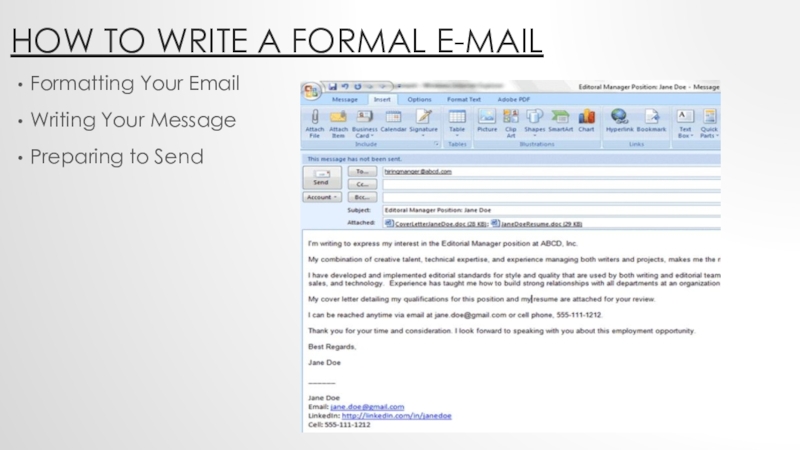


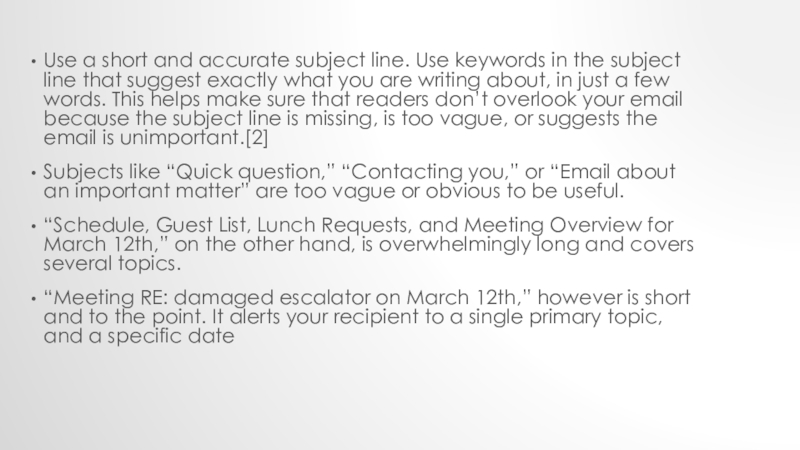
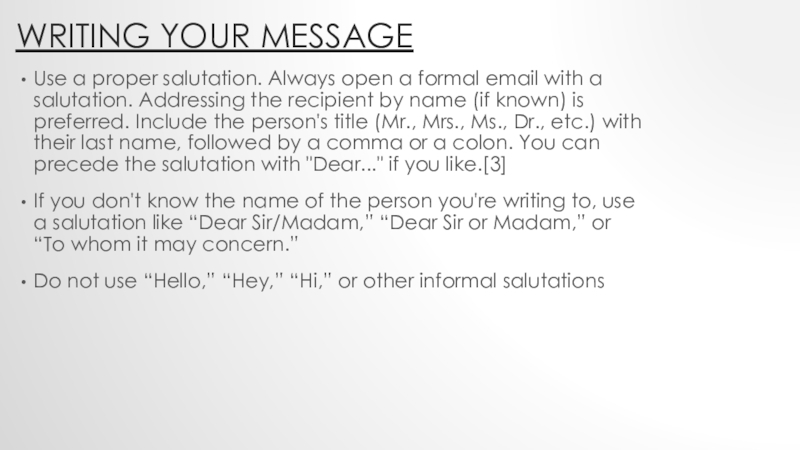
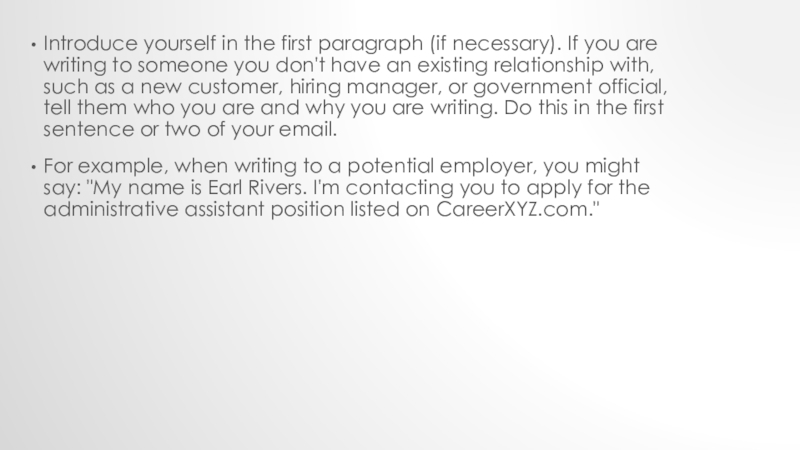
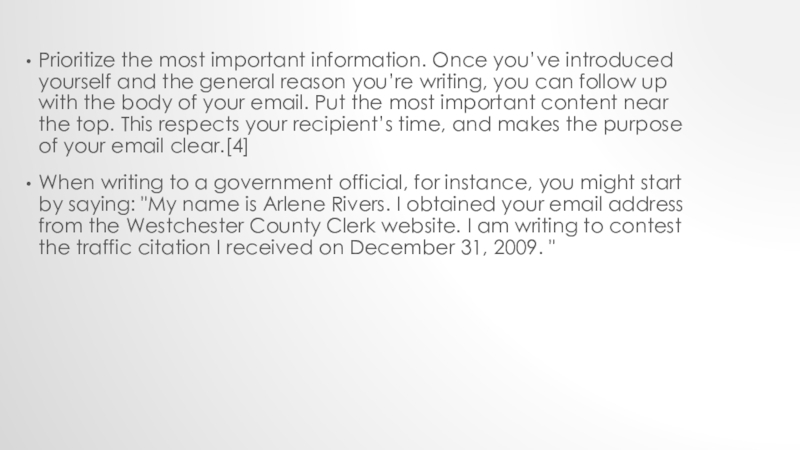
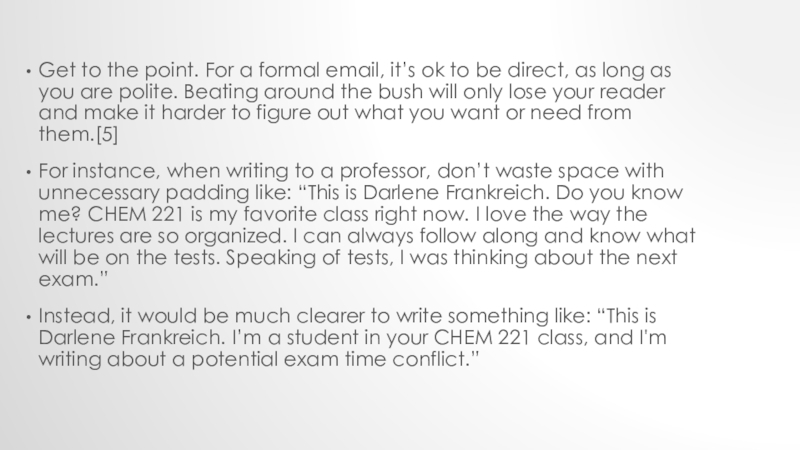

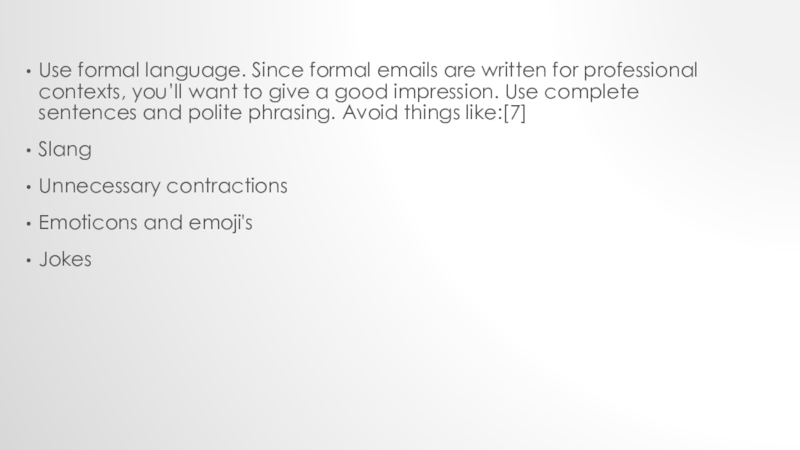
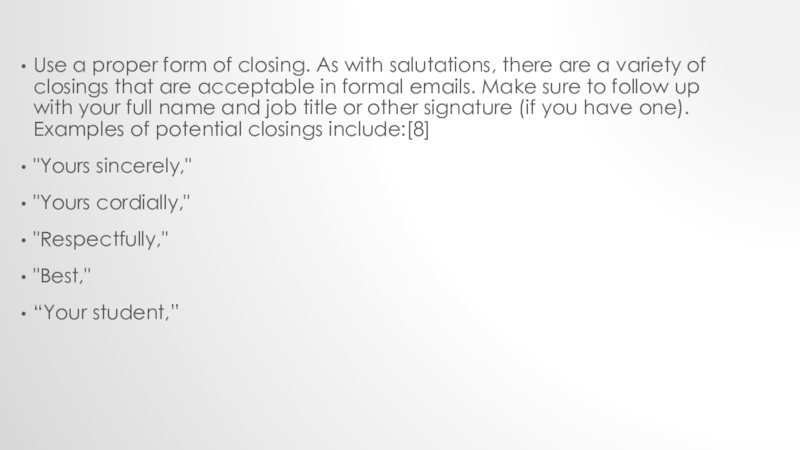

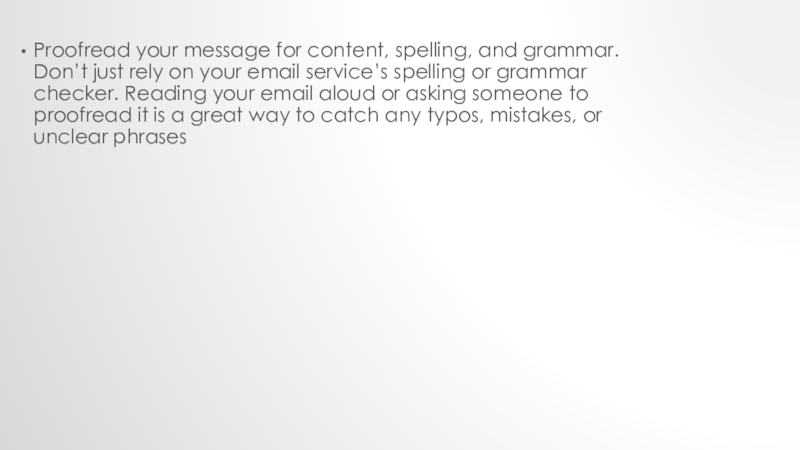
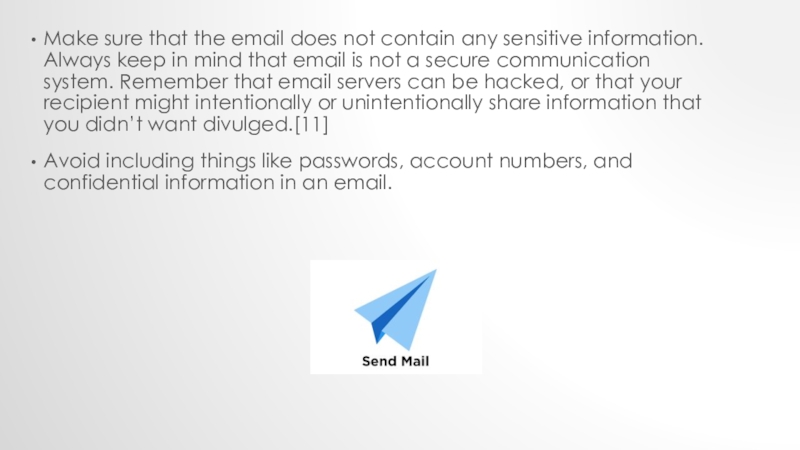
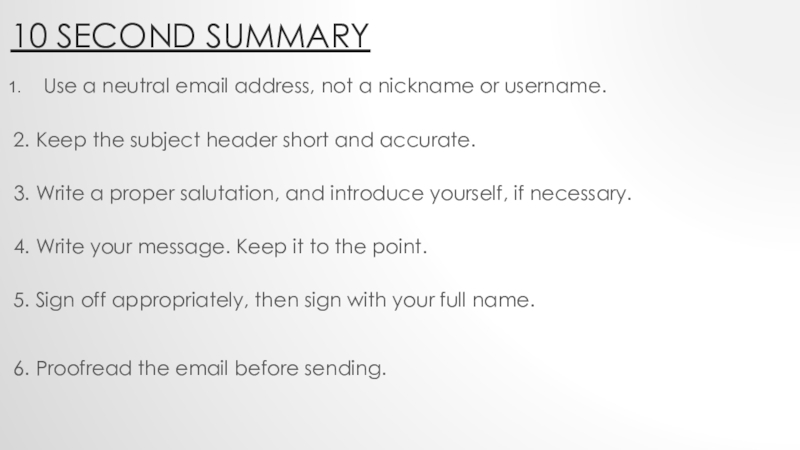
![English for business communication Bibliography[1] http://www.wikihow.com/Write-a-Business-Memo Bibliography[1] http://www.wikihow.com/Write-a-Business-Memo](/img/tmb/7/622066/fb28f21da68bf3473e86e6c0fd5e5896-800x.jpg)

